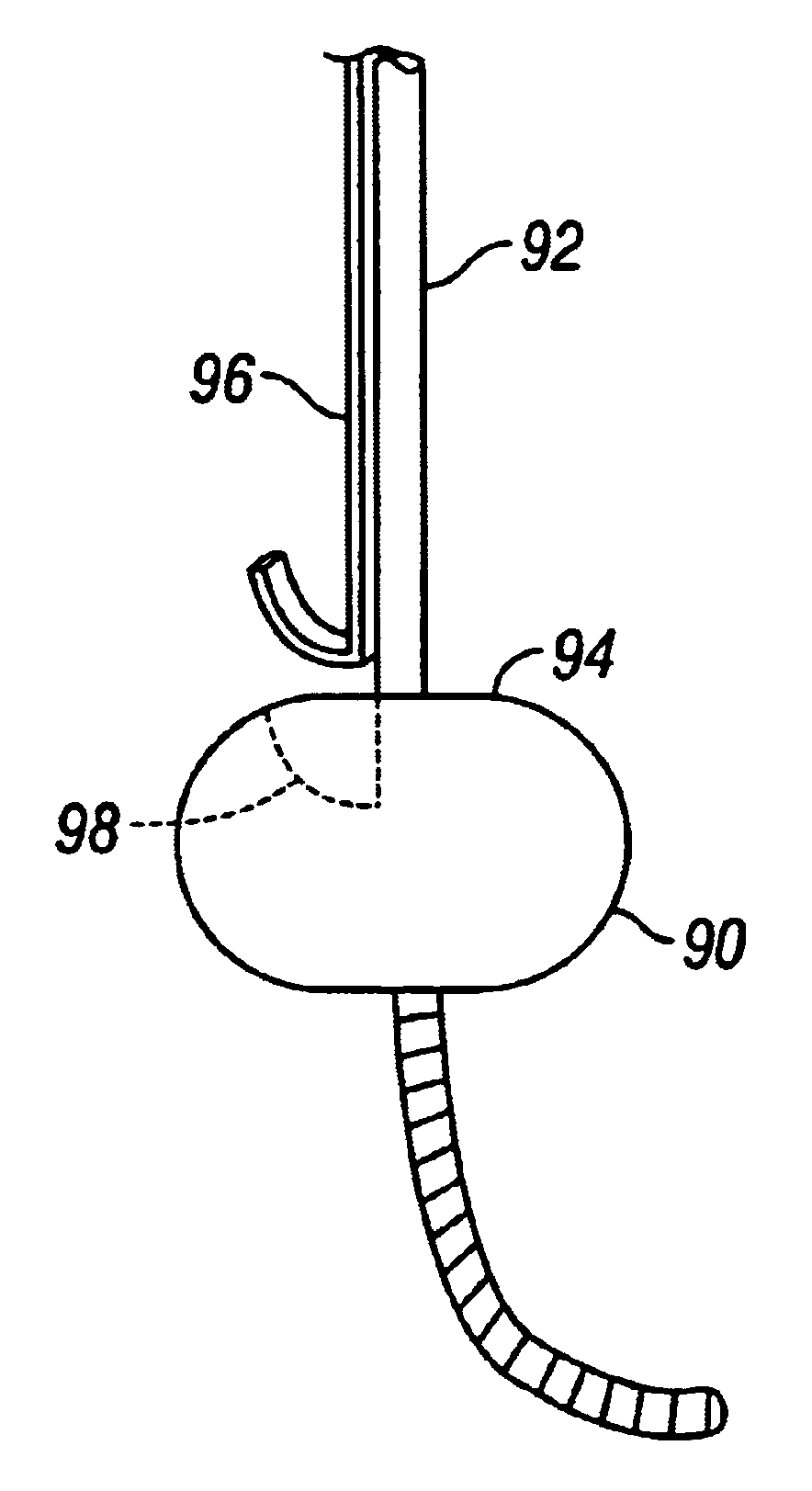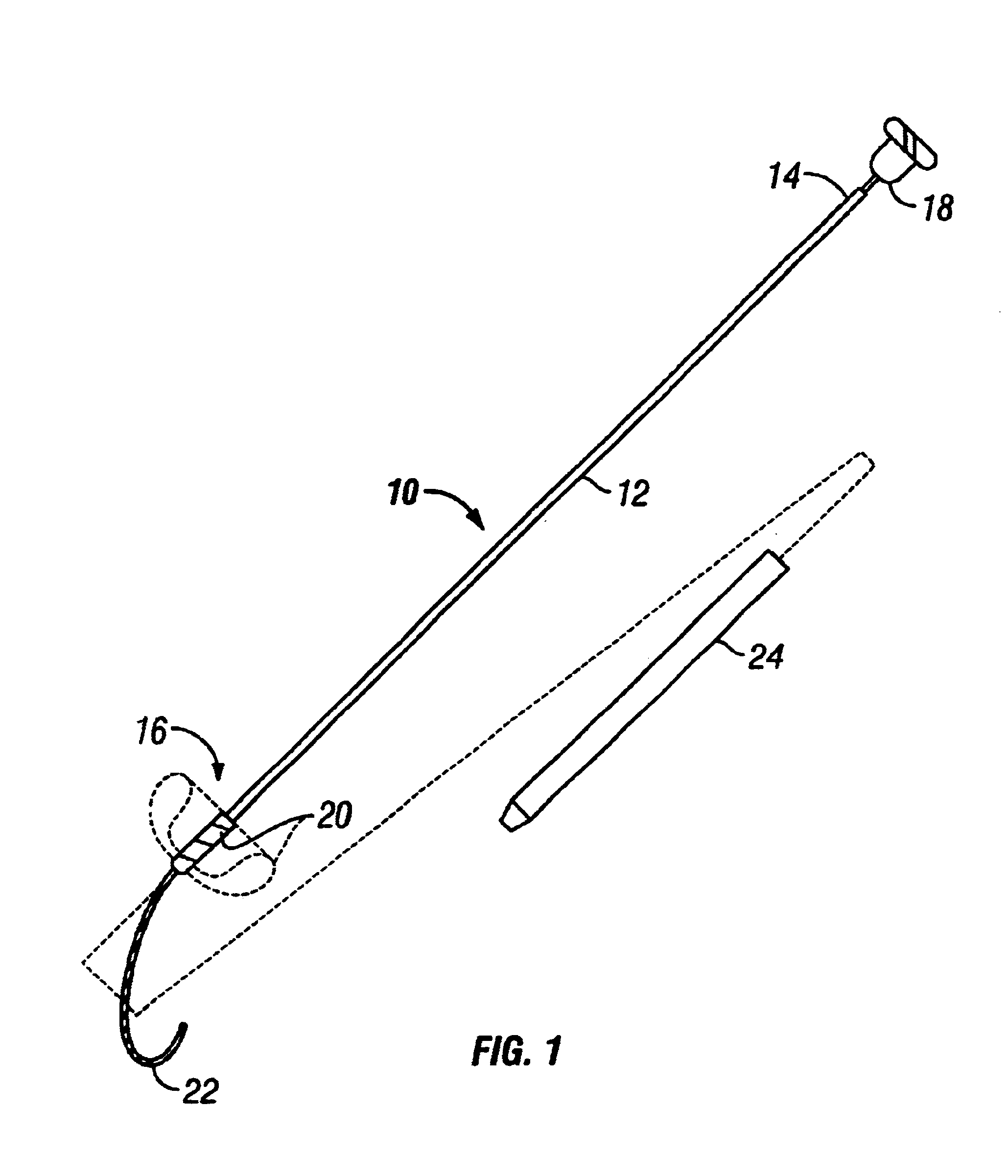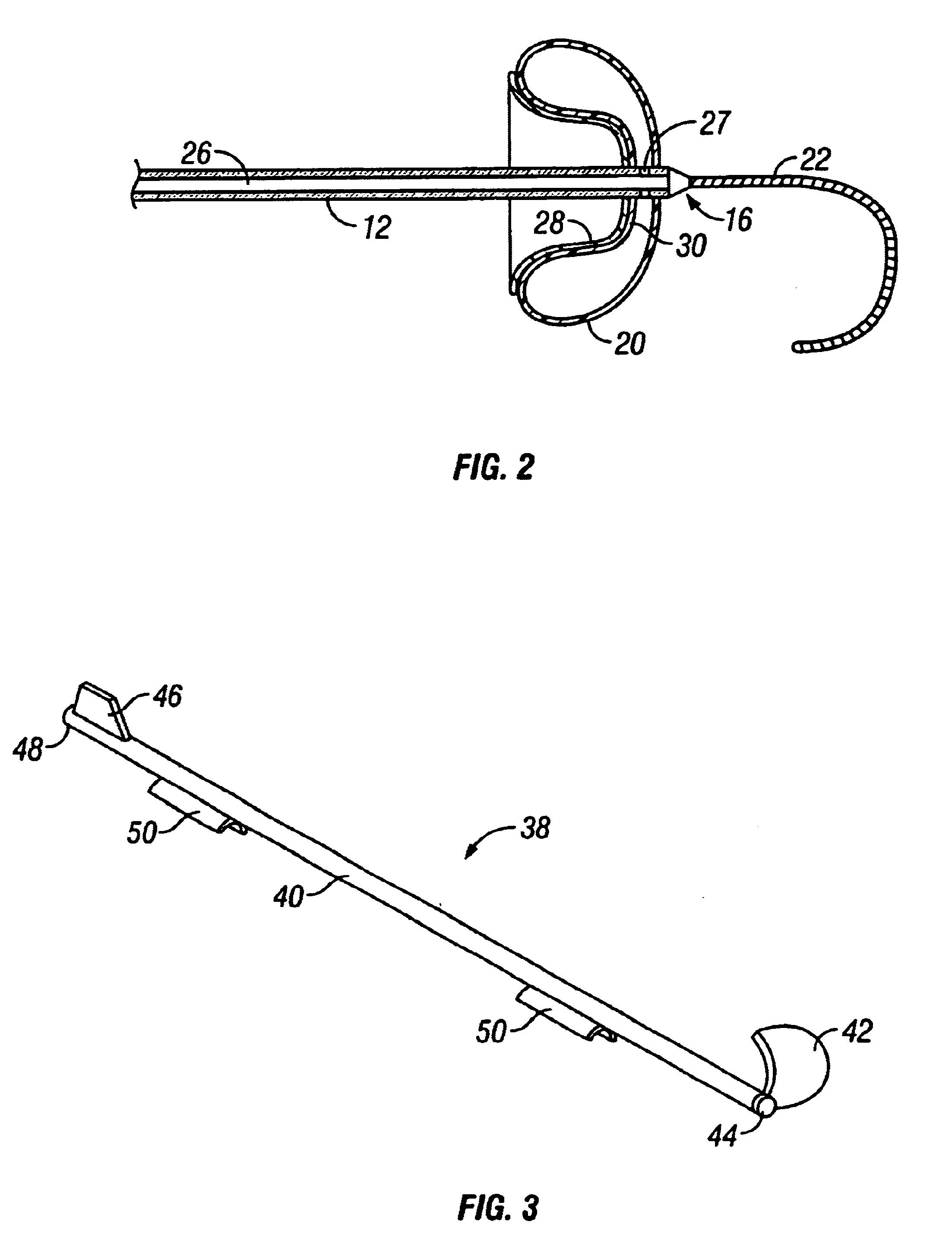Methods and apparatus for forming anastomotic sites
- Summary
- Abstract
- Description
- Claims
- Application Information
AI Technical Summary
Benefits of technology
Problems solved by technology
Method used
Image
Examples
Embodiment Construction
A first exemplary inflatable barrier tool 10 constructed in accordance with the principles of the present invention is illustrated in FIGS. 1 and 2. The inflatable barrier tool 10 comprises a shaft 12 having a proximal end 14 and a distal end 16. The shaft 12 may be formed from a variety of low diameter, medically acceptable tubular materials, such as hypotube. The shaft will usually have a diameter in the range from 0.4 mm to 1.4 mm, and a length in the range from 10 cm to 30 cm. Tool 10 further comprises an inflation of hub 18 which is removably attached to the proximal end 14. An inflatable barrier 20 is attached to the distal end 16 and illustrated in its deflated condition in full line and inflated condition in broken line (in FIG. 1). A guidewire 22 is fixed to the distal end 16 of the shaft 12, and a separate removal sheath 24 is provided. The removal sheath 24 has a central lumen (not shown) which is dimensioned to receive the shaft 12 and balloon 20 in its deflated conditio...
PUM
 Login to View More
Login to View More Abstract
Description
Claims
Application Information
 Login to View More
Login to View More - R&D
- Intellectual Property
- Life Sciences
- Materials
- Tech Scout
- Unparalleled Data Quality
- Higher Quality Content
- 60% Fewer Hallucinations
Browse by: Latest US Patents, China's latest patents, Technical Efficacy Thesaurus, Application Domain, Technology Topic, Popular Technical Reports.
© 2025 PatSnap. All rights reserved.Legal|Privacy policy|Modern Slavery Act Transparency Statement|Sitemap|About US| Contact US: help@patsnap.com



